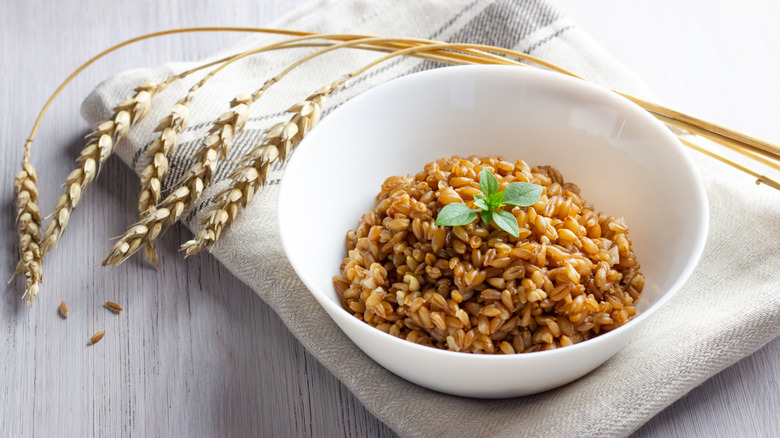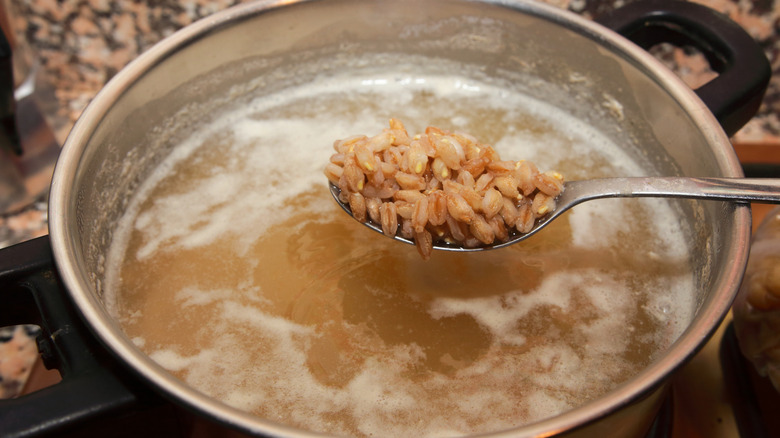For The Best Farro, Cook It Like Another Favorite Food
If you're craving a new twist on Italian food and feeling a little adventurous, it's time to give farro a shot. If you've tried it and the results were underwhelming, we urge you to make it once more and, this time, cook it like one of the dinnertime greats: pasta. There are all kinds of tips, tricks, and how-to guides on the perfect way to prepare this ancient grain, but the truth is that you need to make it in a way that tastes good to you — and, for many, that involves cooking it in plenty of salted boiling water like your favorite noodles.
For the uninitiated, farro belongs to the wheat family but looks like a plump version of rice. With the bran on, it resembles brown rice and is in fact one of the many foods you can cook in a rice cooker using the brown rice setting. Because of its high nutrient and fiber value, farro was often ground into flour in ancient times. However, it is now regaining popularity as a whole grain and is versatile enough to use in many dishes. Think of it like quinoa or brown rice (but chewier and more fun to eat). Put it into salads, pilafs, stir fries, or even a comforting bowl of farro simmered in your favorite umami-rich tomato sauce. To unlock all these farro recipes, the first step is cooking it just right with a brief toasting and a good soak. But the actual process of boiling it in salted water is much like you would with any pasta.
Why the pasta method works on farro
The first step to farro success is to understand what type of this grain you are using. Whole grain farro still has the bran on and contains the most nutrients, but also takes the longest time to cook and requires a long soak beforehand. Semi-pearled farro has the bran partially removed. Finally, pearled farro lacks the bran and is the most delicate and quickest to cook.
It's always a good idea to rinse farro, let it dry, and then give it a quick toast in the oven or a dry pan. This gives it a nutty depth of flavor. For cooking, simply use a pot of boiling water that's seasoned with salt, much as you would with dry pasta. This allows for thorough, even cooking with plenty of seasoning. Cooking farro gets even more interesting when you start infusing this water with more flavors. Consider adding herbs, aromatics, and even spices into the water to flavor the grain.
On average pearled farro takes about 15 minutes to cook, while the whole grain kind can take anywhere from 30 to 60 minutes depending on how long it's been soaked. Checking the consistency by tasting it is the best way to ensure it's done to your liking. Once cooked, let the farro dry so it can soak up the sauce. For a farro salad, make sure the salad dressing is evenly distributed (start with the dressing on the bottom) so the grain will be properly coated with maximum flavor.

